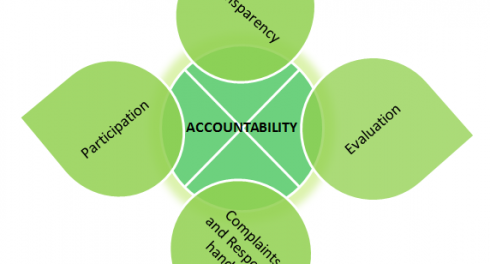 Photo: Rawpixel on Pixabay
Photo: Rawpixel on Pixabay
Donors often get a bad rap for the high transaction costs imposed on grant seekers. This is not unfounded criticism (funders, you might consider self-assessing your practices on Vu Le’s FLAIL scale). But many funders, including TAI members, are sensitive to the burdens their systems place on grant seekers and grantee organizations.
In 2018, TAI undertook a collective effort to tackle a pain point shared by grantee and funder organizations: grant reporting. We have some achievements to celebrate, though progress was not always easy. TAI’s Aligned Reporting: Collaboration Case Note details the ups and downs of this collaboration, which was quite close to home as TAI itself was one of the test cases.
Where did TAI’s aligned reporting journey begin?
In late 2017, TAI member and funder at Open Society Foundations (OSF), the Fiscal Governance Program (now the Economic Justice Program), started a reporting pilot initiative with a sample of grantee organizations. Our interest was immediately piqued as we were experiencing some reporting struggles. As documented in our 2017 Annual Report:
Paperwork was a drain on our time. Despite a shared strategy, TAI staff still tailored content for five interim and two final narrative reports and three quarterly financial reports. We supported two renewal proposals to fulfill individual member reporting and grantmaking timelines.
The aim of the initiative, our OSF program officer described to us in an email, was to explore different reporting methods with grantees, with an emphasis on learning and partnership rather than compliance. She asked, would TAI like to participate? We may have tried to wait a respectable amount of time before responding; no need to seem too desperate with our funder to burn up our reporting requirements. In truth, we were in right away.
How did this become a TAI collective effort?
TAI continued to work with OSF on their reporting pilot initiative and began to gather data points on our reporting efforts and discuss with our funder members. These conversations dovetailed into TAI’s own Learning strategy that includes a focus on smarter grantmaking practices that enhance funder and grantee organization learning. So began TAI’s 2018 collective aligned reporting initiative.
The aim of the initiative was to streamline reporting timelines, content, and metrics for a pilot cohort of TAI member grantee organizations with funding from two or more TAI members (including TAI). TAI shepherded the initiative and developed a template based on member reporting guidelines. Members coordinated closely with each other and engaged other grantee organizations directly.
As noted in our 2018 Annual Report, this initiative featured in our annual lowlights as progress stalled but we also saw some emerging results. And we certainly drew learnings from this effort, not least that grantee needs should drive such efforts. For example, efforts to align timelines across grants or funders should suit grantee organization needs and practices.
Where did TAI’s own aligned reporting journey take us?
As a grantee, TAI benefitted from participating in OSF’s reporting pilot and the aligned reporting initiative with our members.
We faced a real and collective burden as a small organization (four full-time people in 2017), spending at least one month of staff time on reporting each year (estimate generated in conversation with OSF). And we were definitely missing out on potential reporting utility. Rather than a unified story of our efforts across TAI’s collective 2017-2019 strategy, we were slicing and dicing material to match different grant reporting timelines. And TAI was perpetuating the annual report “madness” as we produced our 2017 annual report in addition to our required funder reporting.
Putting such a fine point on the effort vs utility of our reporting efforts inspired an internal pause-reflect-act cycle. We revisited the purpose and audience for our reporting and refined our process and content to increase the report utility for us and our funders. Though TAI still has different grant timelines, we now produce one annual and one semi-annual report. This content is designed to fulfill grant reporting requirements for all our funders. And we include sections in our reports, or in other products, where we can dictate content useful to our collective work and learning (such as our Collaboration Case Notes series).
Where might TAI’s collective efforts go from here?
As a funder collaborative, we were humbled by this seemingly simple task. Drawing on an OSF insight, more useful reporting does not always mean less effort or resources. You can read more about TAI’s collaborative effort in our Aligned Reporting: Collaboration Case Note. As with many systems challenges we tackle, we found it helpful to start with a specific practice, bring grantee’s experience to the center, and celebrate incremental progress.
We hope that more grantee organizations will see the benefits of the aligned reporting initiative, though TAI will likely adapt our collaborative process. In the meantime, we encourage grantee organizations to ask your program officers about steps you might take together towards smarter grant reporting. And stay tuned for tips from TAI’s funder members on smarter grantmaking conversations grant seekers can have with funders.
Alison Miranda is a Senior Learning Officer at Transparency and Accountability Initiative (TAI).


